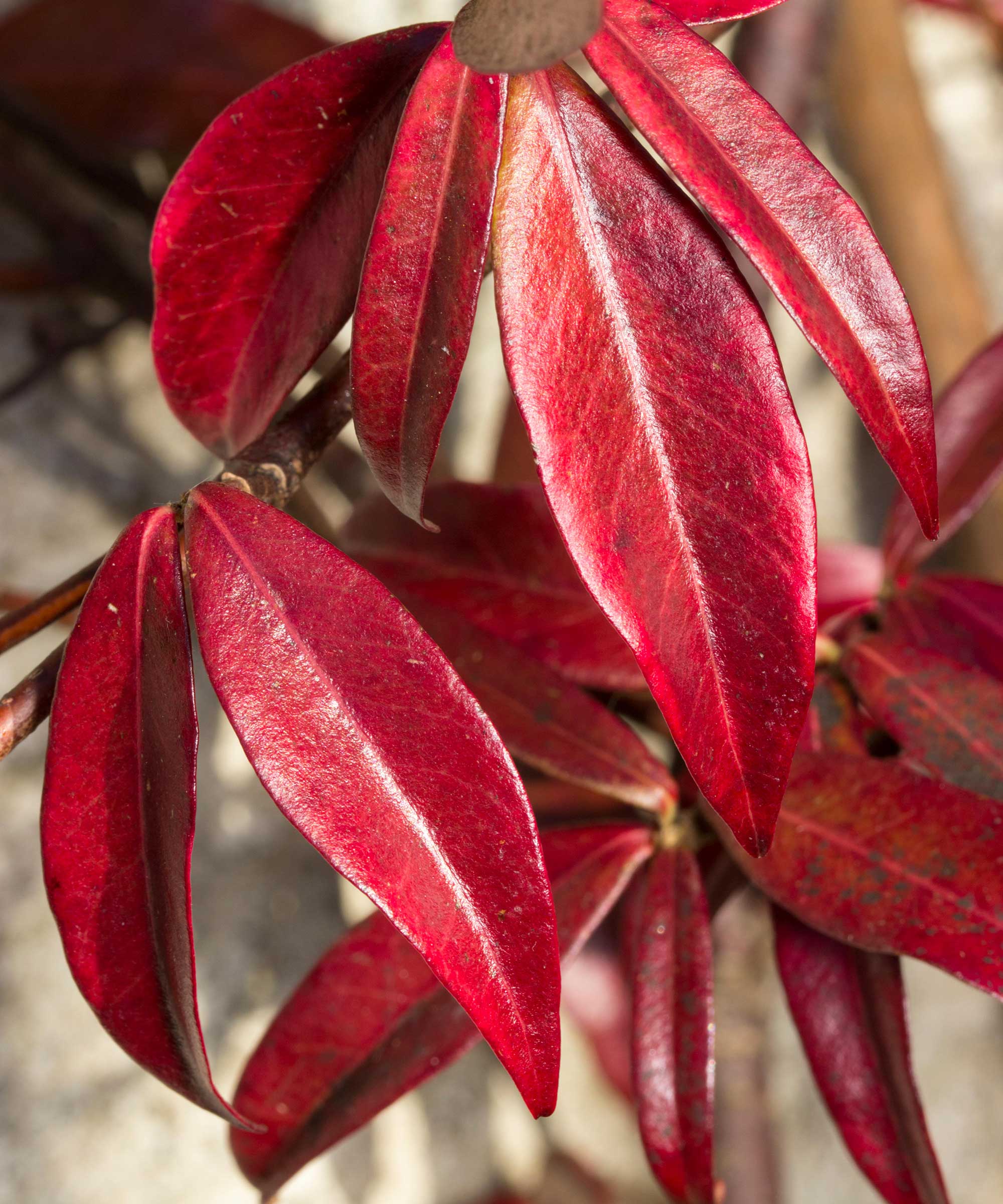
Q: I have a star jasmine in a large planter on my patio, which I'm training up the wall. It's bloomed beautifully, but recently, some of the leaves have turned red. What could be the reason?
A: Naturally, a change in color in your star jasmine can be worrisome. It's a valid concern, as often, it's a sign of stress for these fragrant flowering climbers.
According to Nastya Vasylchyshyna, resident botany expert at Plantum, the pigments causing the reddish hue are stimulated by various environmental factors. Below, experts discuss each one, from improper watering to a lack of nutrients, and how to dodge the problem.

4 potential reasons why your star jasmine has red leaves
These tips will help you keep these evergreen climbing plants healthy.
1. Changes in temperature

Brock Ingham of Bigger Garden notes how star jasmine doesn't like sudden changes. 'If you have it outside, a sudden cold snap can turn the leaves red as the plant tries to cope with the chill,' he says.
If keeping it as a houseplant, be sure to protect it from central heating, air vents, and drafts. 'You want to keep the temperature around it as stable as possible,' Brock adds.
Top tip: Nastya says, 'If your winters are too cold to grow the star jasmine outside year-round, you can carefully dig it up, pot it, and keep it inside until warm weather sets in.'
2. It's getting too much sun (or not enough)

Brock says, 'In the garden, too much direct sunlight can scorch the leaves, causing them to redden, especially in younger plants that are still getting established.' On this note, Nastya recommends a planting spot that has direct sunlight in the morning or evening and shade in the afternoon.
If you’ve already planted the star jasmine in a spot that’s too sunny, Nastya suggests diffusing the light with a temporary canopy secured with wire or stakes. 'Set up the canopy only in extremely sunny and hot weather,' she says. We think this shade cloth from Amazon would work well.
Brock continues: 'If it’s indoors, the opposite problem can occur if it’s not getting enough light. But again, too much direct light through a window can be just as bad. A nice, bright spot without direct sun is usually perfect.'
3. Inconsistent watering

Gardening expert Lisa Eldred Steinkopf says, 'Inconsistent water, which is stressful to the plant, may also cause red leaves.' So, she advises keeping star jasmines evenly moist. 'Don’t allow them to stand in water, but also don’t allow them to completely dry out.'
Brock also highlights the importance of good drainage. This helps avoid waterlogged roots which can otherwise lead to root rot and stressed, red leaves.
4. A lack of nutrients

'Lastly, it might be a nutrient thing,' says Brock. 'A lack of essentials like phosphorus can show up as red leaves.' He recommends adding fertilizer during the growing season (spring and mid-summer) to help keep everything in check. 'Just be careful not to overdo it – more isn’t always better.'
Lisa says, 'My rule is to fertilize a plant every fourth watering, or use quarter-strength every time you water. If you choose the latter, you are less likely to forget to fertilize your plant.'
FAQs
What should you do if your star jasmine has red leaves?
Victoria Cummins, a gardening expert from PlantWhisperer, advises reviewing your care practices and correcting any potential issues. Then, prune out any dead, damaged, or excessively reddened stems to help redirect energy to healthy growth, she says. If you need new pruners, this gonicc pair from Amazon is a popular pick, and very well-rated.
'With proper cultural conditions, star jasmine is fairly resilient and may rebound after you've addressed the underlying stress,' she adds.
Are red star jasmine leaves always a cause for concern?
Not always - older leaves of your star jasmine may turn red before falling off, which is simply a sign of aging.
Similarly, young leaves typically emerge in spring with a reddish-pink tint before they mature. Such seasonal changes are normal.
Check, too, the variety of your star jasmine. For instance, it's normal for ‘Winter Ruby’ to change color over winter, then turn green again in the spring.
Star jasmine is heavily fragranced, which makes it a wonderful plant to have on a patio or by a doorway. Don't forget that star jasmine also needs pruning to keep it looking its best. Our practical guide explains how to do it.







